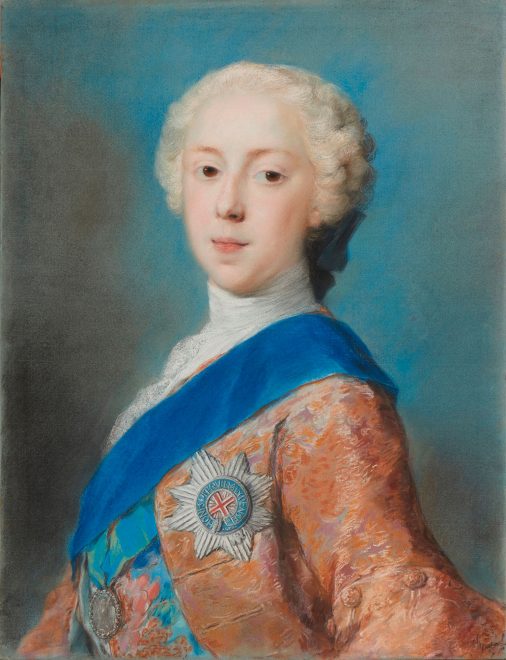Today is the 278th anniversary of the raising of the Jacobite standard at Glenfinnan in 1745 and by a fortunate coincidence that coincides with publicity for a facial reconstruction of the central figure on that day, Prince Charles Edward.
Several news sites have reported about a project done by a masters student from Dundee University to reconstruct the appearance of the face of Prince Charles Edward as it was in 1745-6. The existing death masks from 1788 were scanned and then adjusted to allow both for the stroke which ended his life and for the intervening forty and more years of aging. Other features such as skin tone and hair were based on descriptions and paintings.
The BBC News website reports on the work at Death masks recreate face of Bonnie Prince Charlie
The Daily Telegraph has an article about the result at Not so Bonnie Prince Charlie? 3D mapping reveals true face of 'handsome' Jacobite leader
The Scottish Daily Express also covers the story at Prince Charlie was not as Bonnie as we thought as Jacobite's face recreated
A previous facial reconstruction made in 2019 of the King-in-exile based on the death masks and other contemporary sources can be seen at New facial depiction created of Bonnie Prince Charlie
The effect created by the resulting portrait bust is rather of someone with a hangover or perhaps what the Prince might have looked like whilst on the run after Culloden, although for part of that time he let his beard grow.

I would imagine that as a man who saw himself as heir apparent, and based on the contemporary portraits at least, that up to his flight after Culloden he would have been careful to present a dignified appearance in public, and indeed in private. He certainly had some endearingly human vanity. A few years earlier as a teenager he had been discountenanced one morning when discovered in bed with his curling papers still in his hair. There is some evidence that he was auburn rather than fair or blond as to his hair colour, and the portrait ms indicate that on formal occasions it would have been powdered.
Baccolo from the 1745 Association has shared with members online the following view:
For the acne question I think they picked it from a description given by an Englishman which appears in Chamber’s’ History of the Rebellion:
The Prince “wears his own hair, has a full forehead, a small but lively eye, a round brown-conmplectioned face; nose and mouth pretty small; full under the chin; not a long neck, under his jaw a pretty many pimples.”
The BBC News site has an article from 2017 which is an introduction to Jacobitism and includes portraits of the Prince as a young man and as an older, sadder figure. It can be seen at The myths of Bonnie Prince Charlie and the Jacobites

The aging King-in-exile circa 1785
Image Wikipedia
The academics at Dundee have developed considerable expertise in such facial reconstructions of historic figures.
In 2010 the BBC reported on one they had done of Sir John de Stricheley, an English knight who died whilst garrisoning Stirling Castle on behalf of Edward Balliol in 1341. That article can be seen at Stirling Castle knight revealed as English nobleman
The article has a number of links to others which give more details about what his skeleton revealed about Stritcheley’s life and violent death in his mid-twenties.
The Daily Telegraph reported in 2016 on the processes that resulted in both the identification of the actual scull and of the appearance of Charles Edward’s great great great grandfather Henry Lord Darnley, Duke of Albany and King Consort. That illustrated account can be seen at Face of Lord Darnley revealed - Mary Queen of Scots' 'lusty and well proportioned' husband


No comments:
Post a Comment